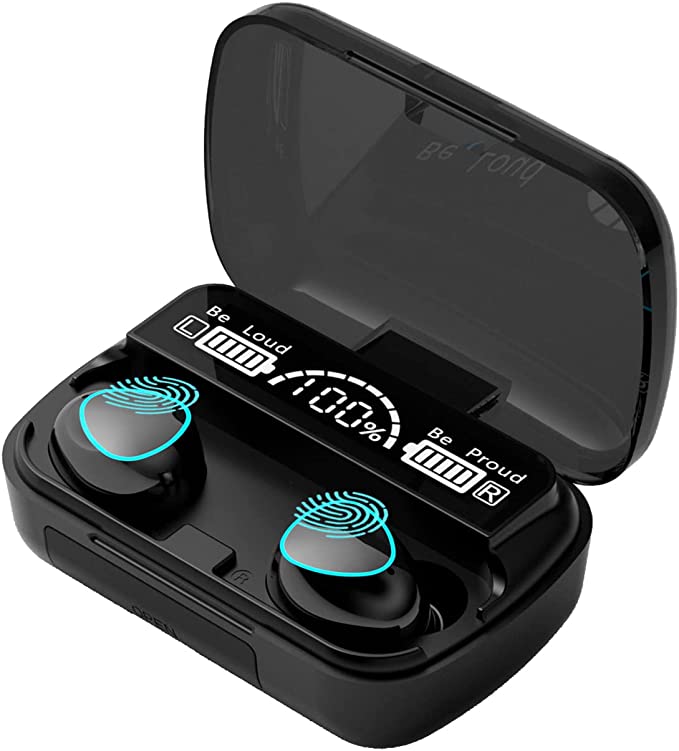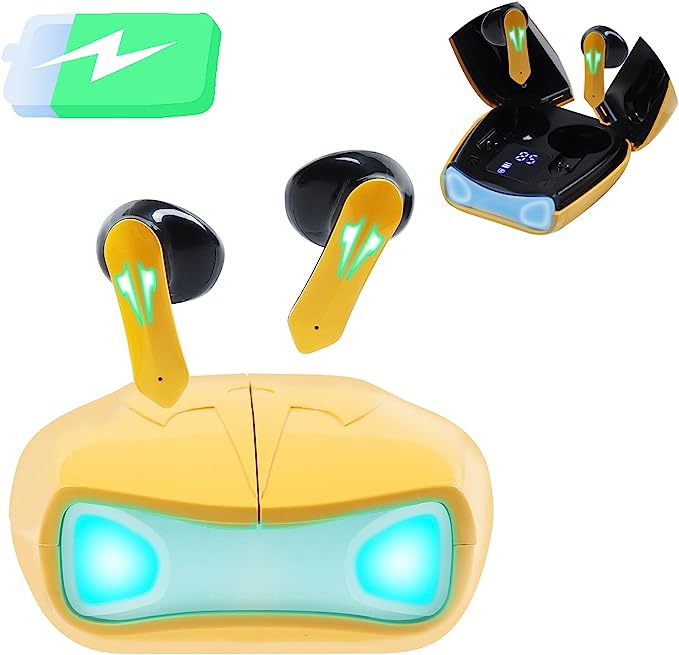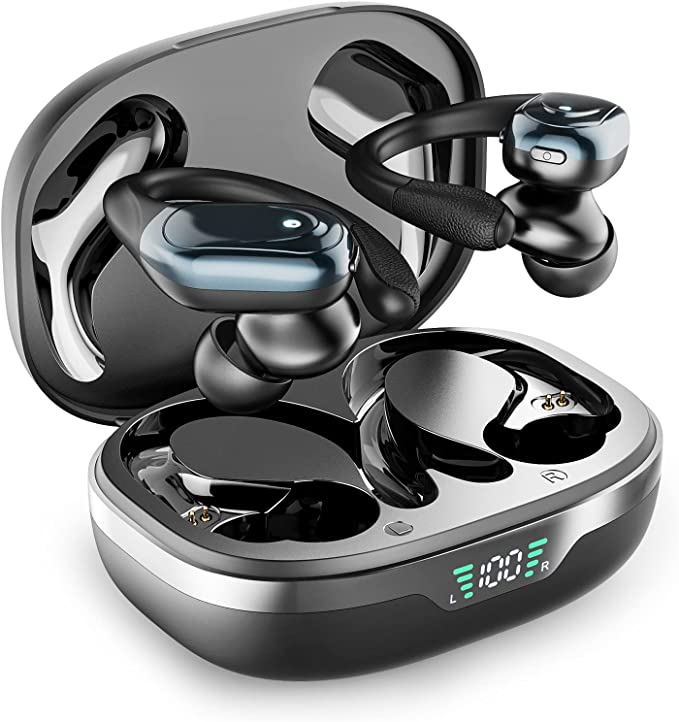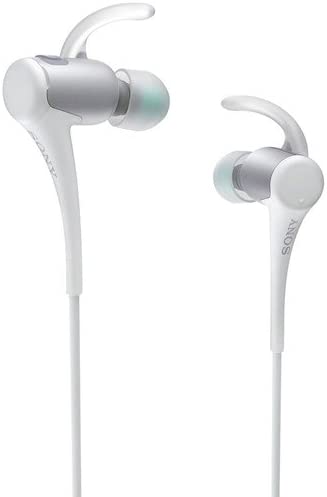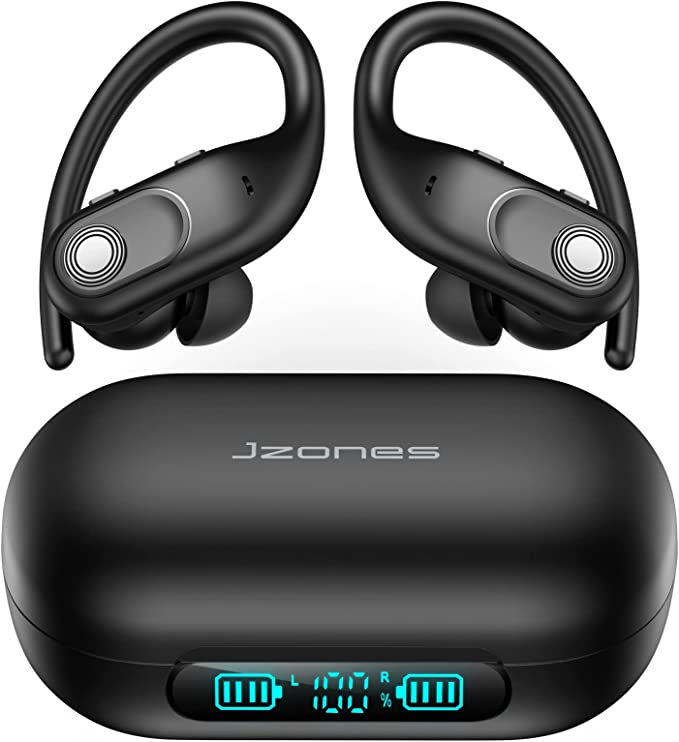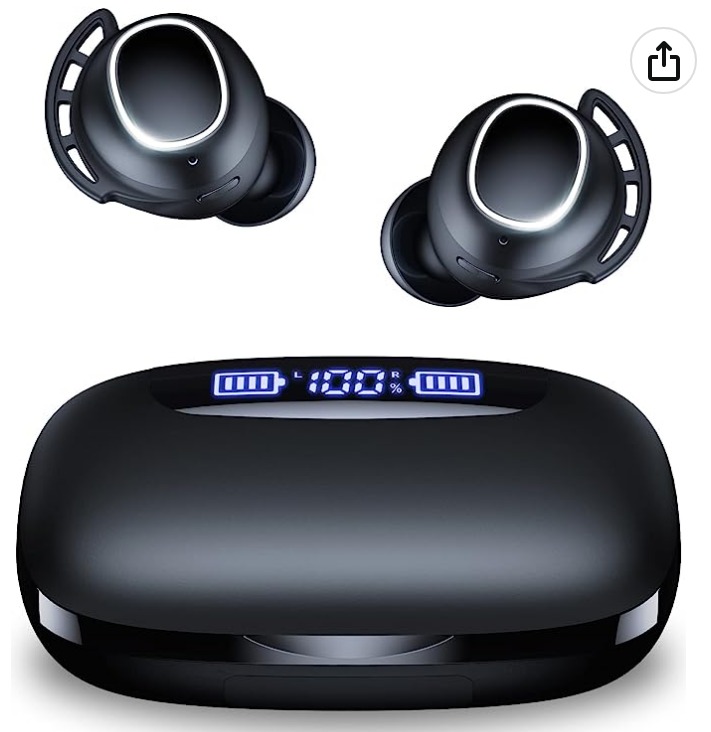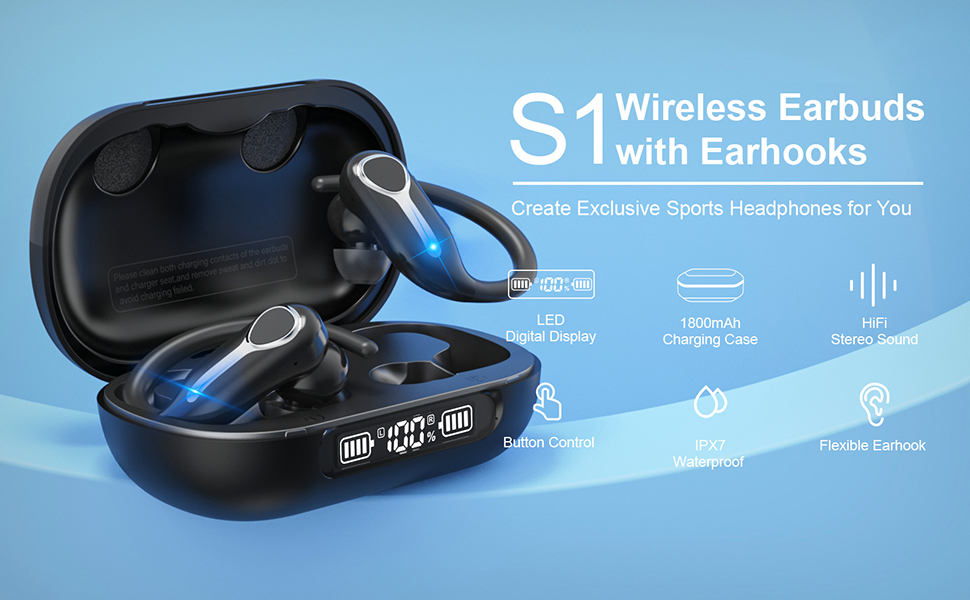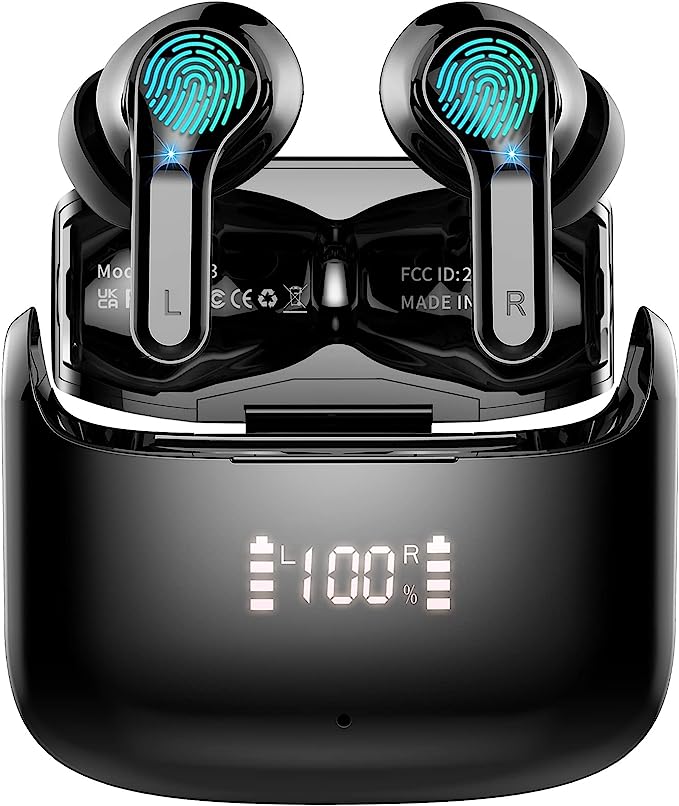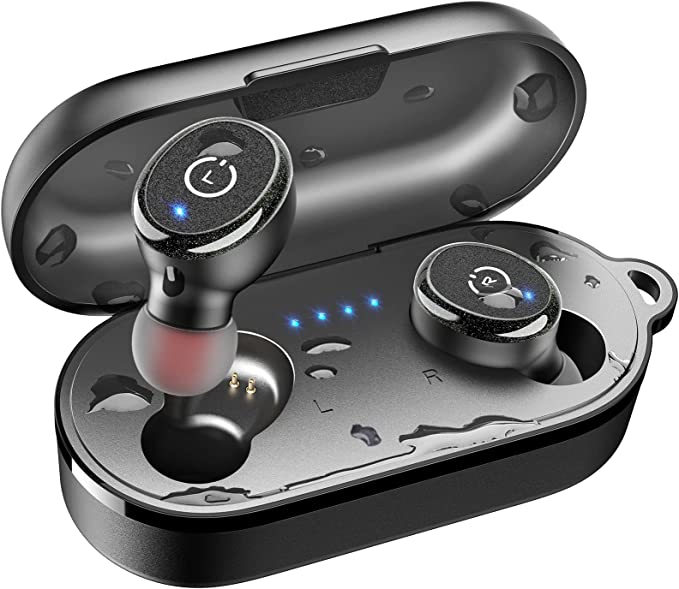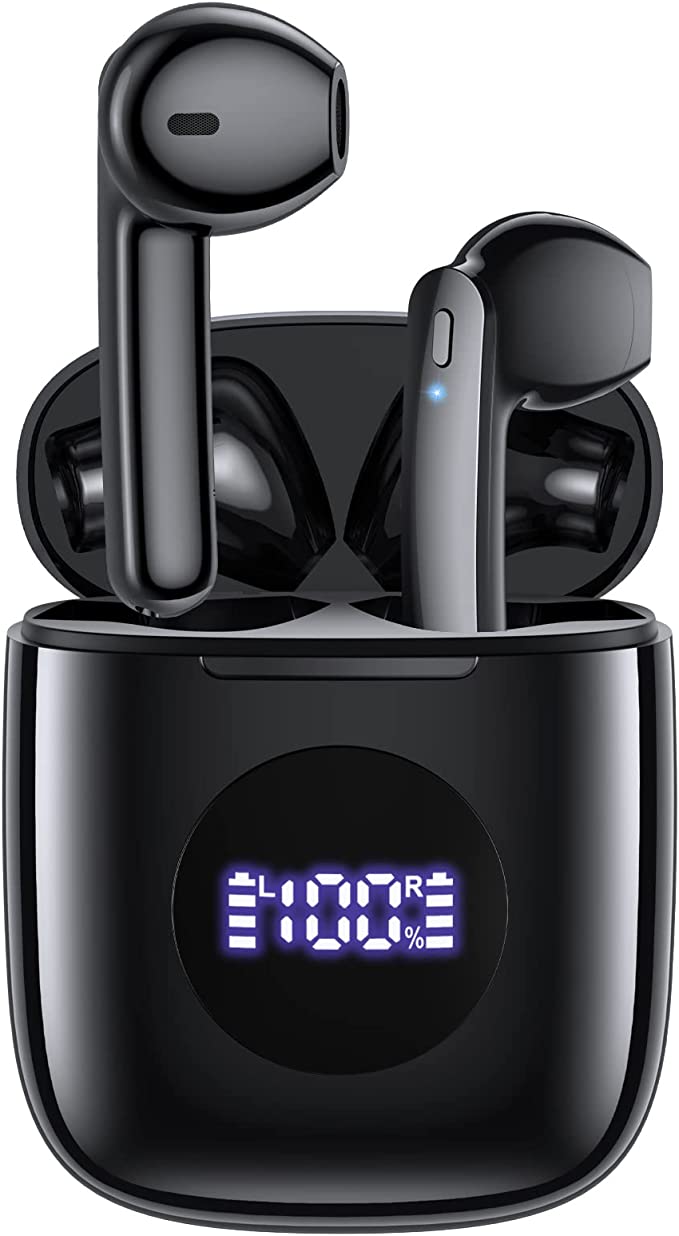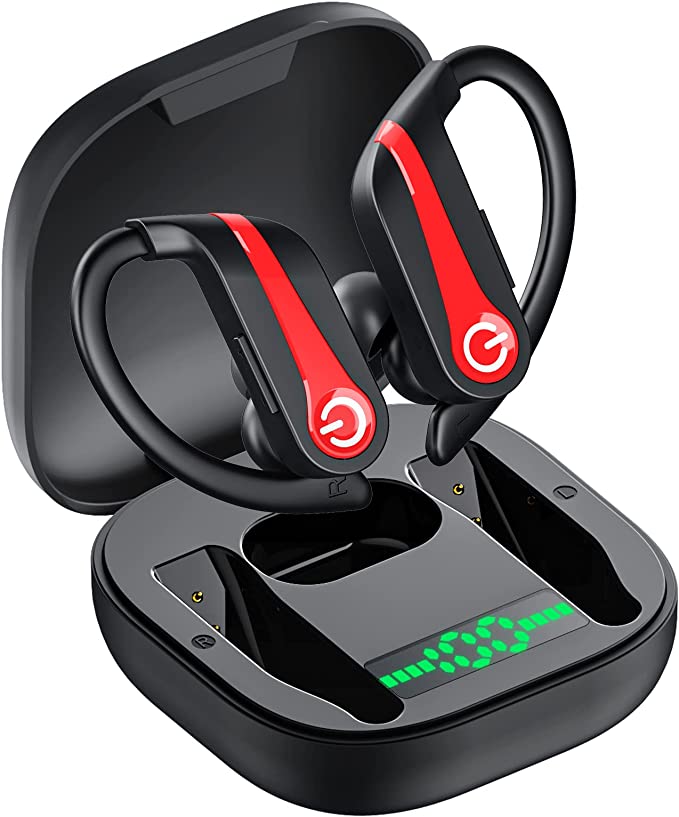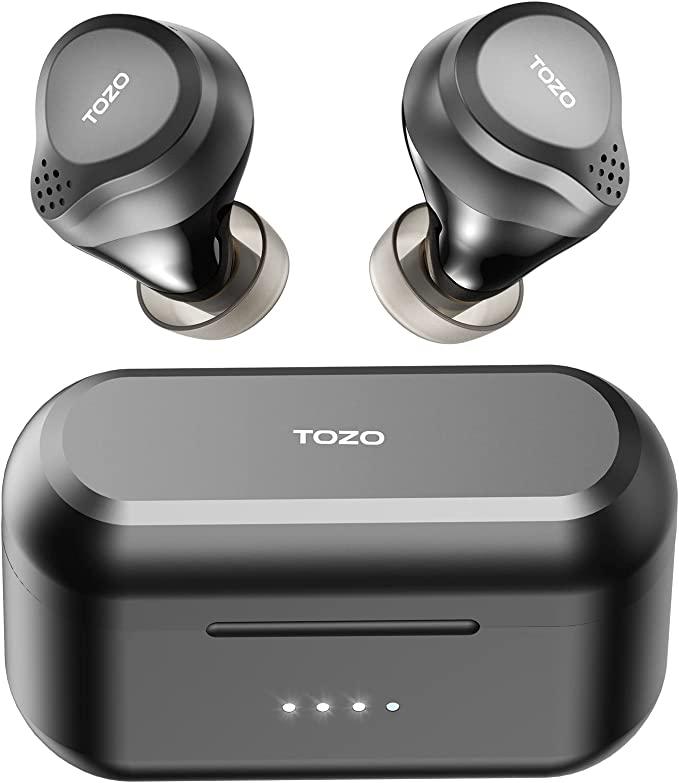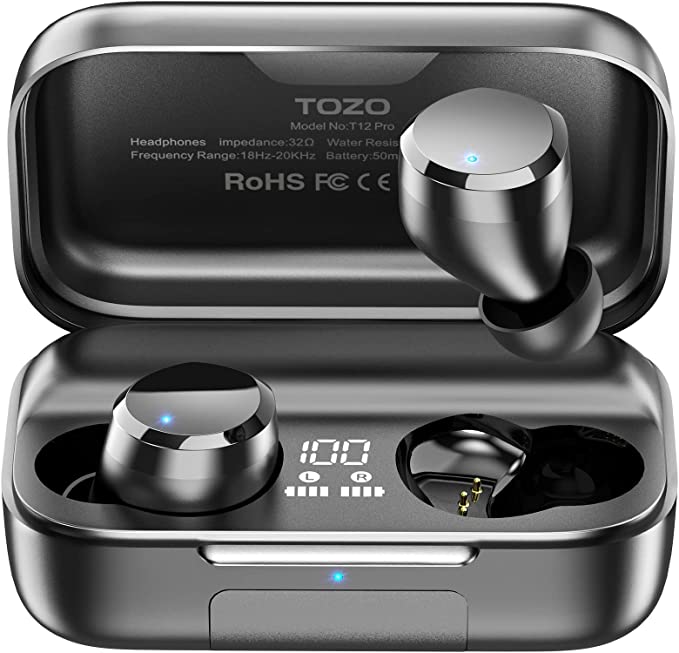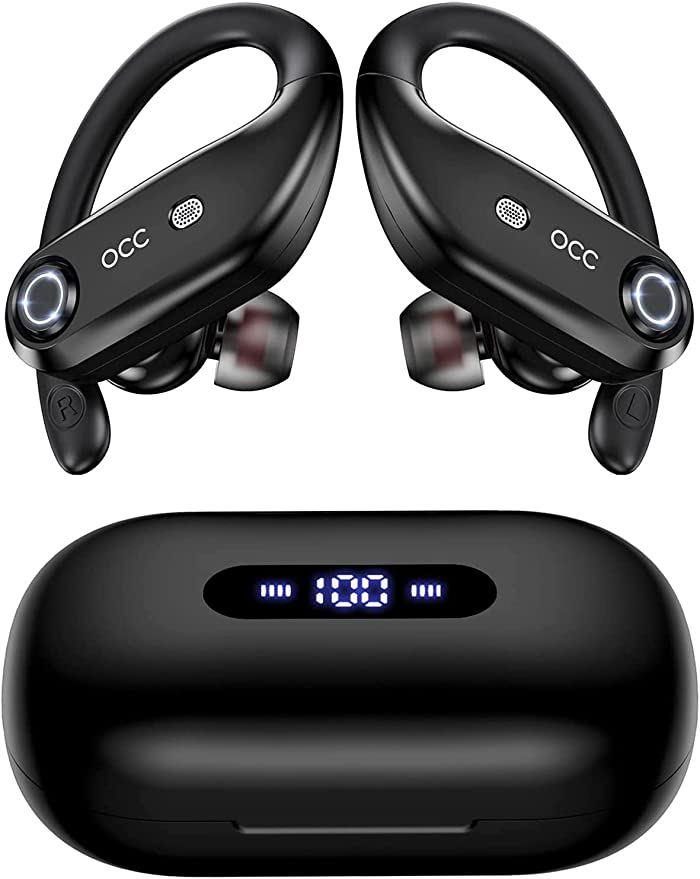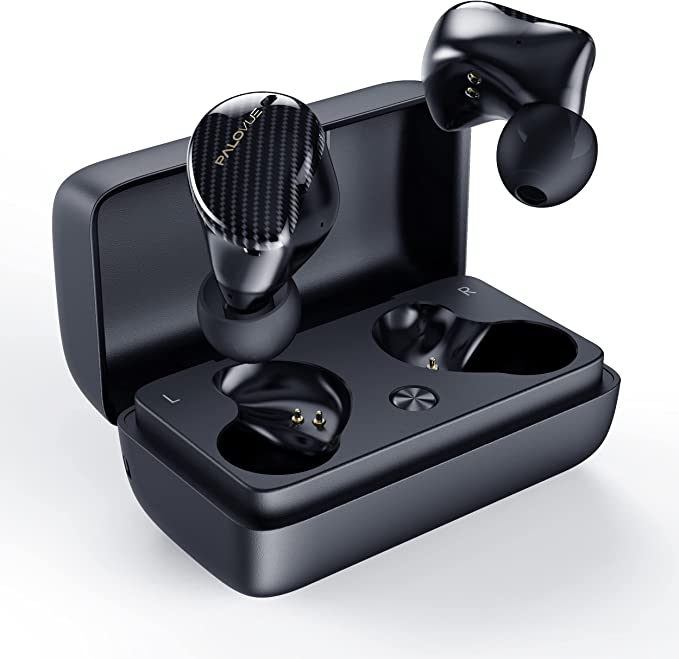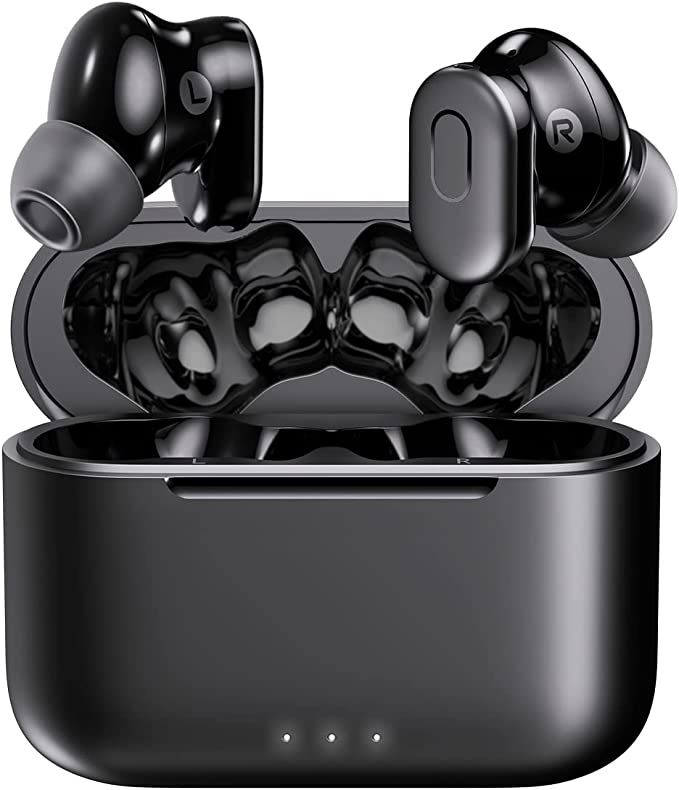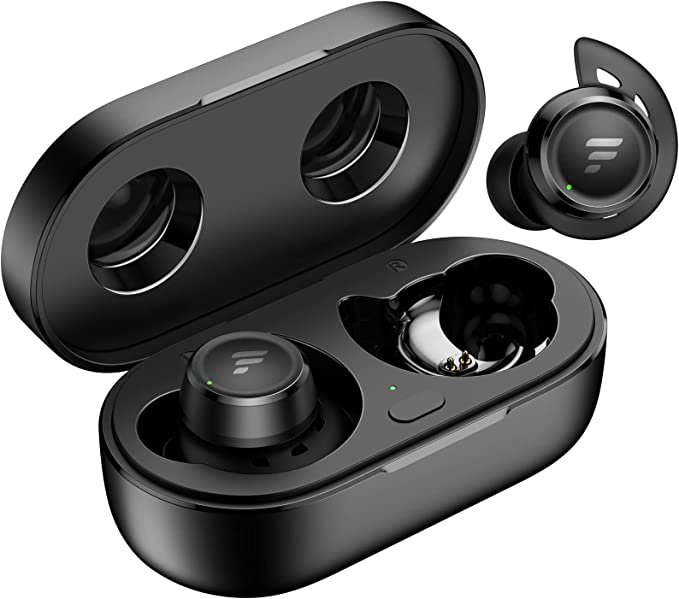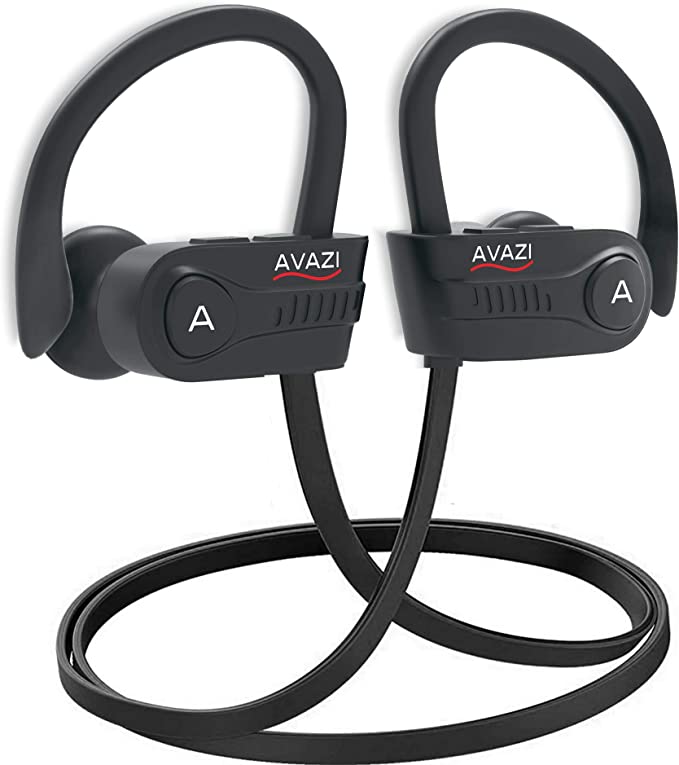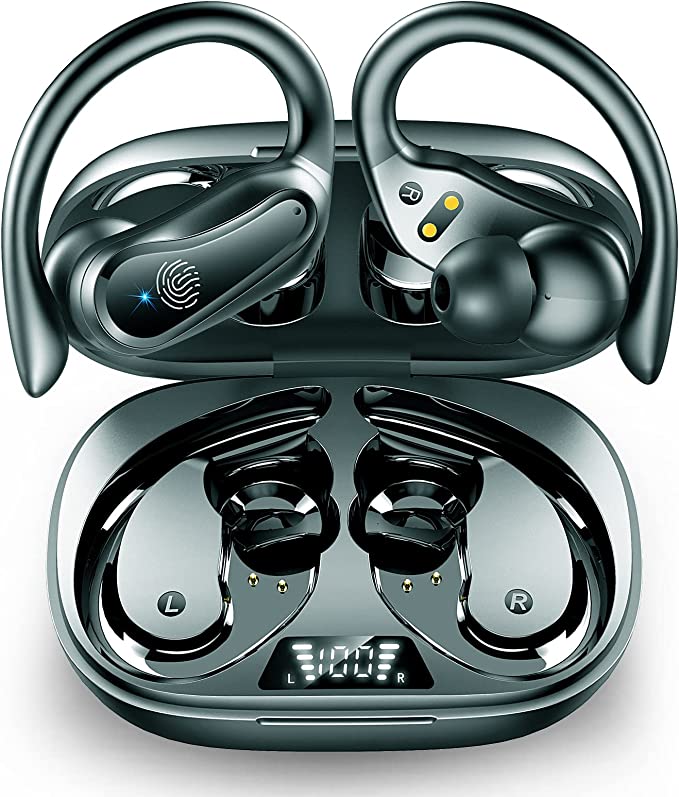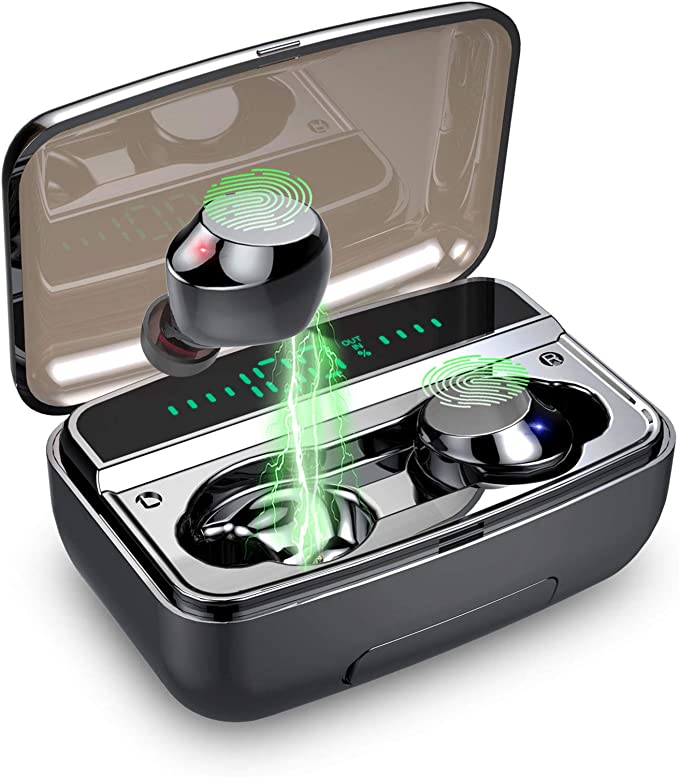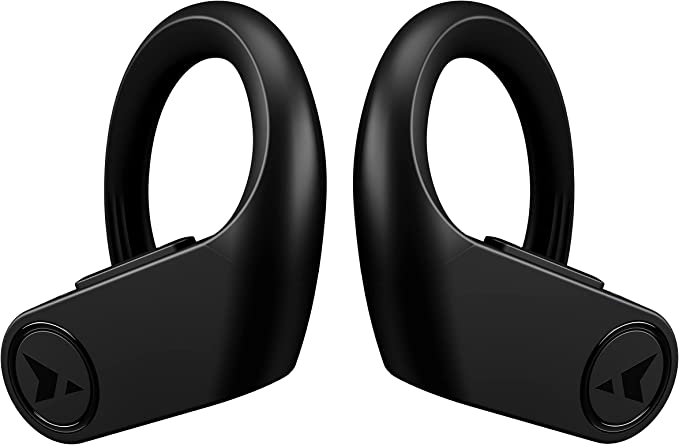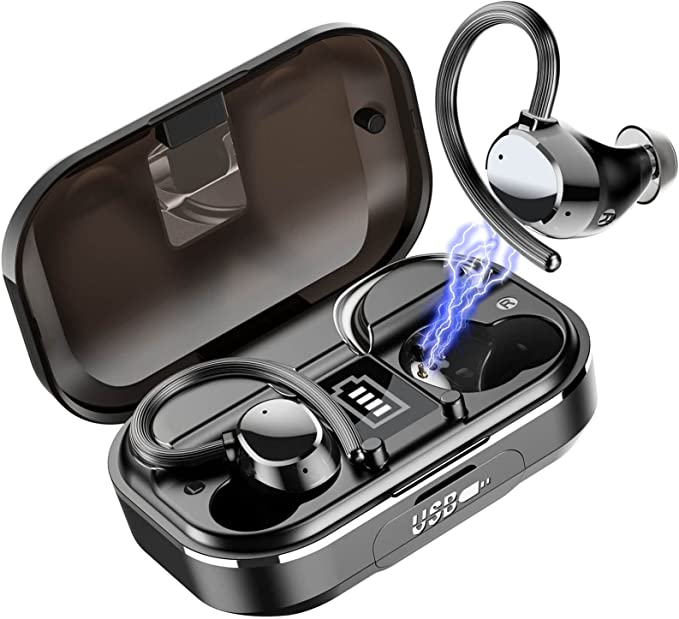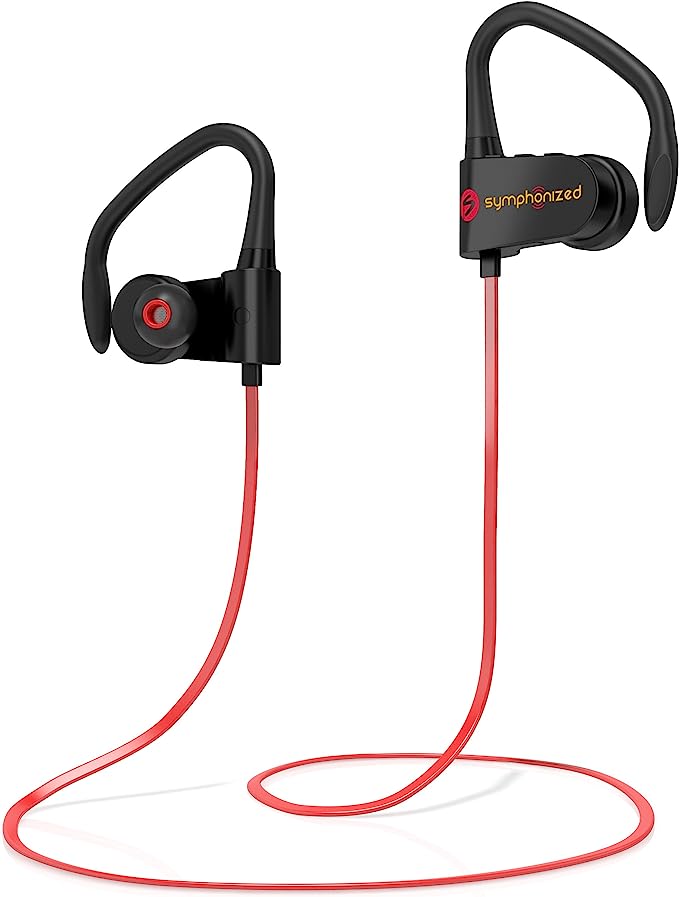TEGAX S20 Wireless Earbuds: Immersive Sound and Ultimate Convenience for Active Lifestyles
Update on Feb. 19, 2025, 2:48 p.m.
The modern world moves fast. We’re constantly on the go, juggling work, workouts, and everything in between. We crave convenience and seamless integration of technology into our lives. And for many of us, music is the soundtrack to that journey. This is where wireless earbuds have stepped in, transforming from a niche gadget to an everyday essential. But the TEGAX S20 isn’t just another pair of wireless earbuds; it’s a testament to how far we’ve come in miniaturizing and weatherproofing sophisticated audio technology.

The Freedom of Wireless: A Quick Look Back
The tangled mess of wired headphones is a frustration many of us remember all too well. The yearning for untethered listening experiences isn’t new. Early attempts at wireless audio, dating back to the mid-20th century, involved bulky, unreliable radio transmitters. The sound quality was often poor, and the range was limited. The true revolution came with the advent of Bluetooth technology in the late 1990s, a standardized, short-range wireless communication protocol that paved the way for the compact, high-fidelity wireless earbuds we enjoy today.
Conquering the Elements: IPX8 Waterproofing
Let’s face it: life isn’t always lived in a perfectly controlled environment. We sweat, we get caught in the rain, and sometimes, accidents happen. That’s where the “IP” in IPX8 comes in. IP stands for “Ingress Protection,” and it’s an international standard (IEC 60529) that defines levels of sealing effectiveness of electrical enclosures against intrusion from foreign bodies (like dust and, crucially, water).
The “X” in IPX8 means the TEGAX S20 hasn’t been formally tested for dust resistance (though the tight fit likely offers some protection). The “8,” however, is the star of the show. It signifies that the earbuds are protected against the effects of continuous immersion in water. While the standard guarantees protection beyond 1 meter, the exact depth and duration are specified by the manufacturer. While TEGAX doesn’t give us those exact numbers, the IPX8 rating itself gives us immense confidence. It means these earbuds are designed to withstand not just splashes or sweat, but also accidental submersion. Think of it this way: you can confidently wear them during an intense workout, a rainy run, or even while washing dishes, without fear of water damage.
How is this achieved? It’s all about creating a watertight seal around the sensitive electronic components. This likely involves a combination of tightly fitted housings, specialized glues and seals, and potentially even hydrophobic coatings on internal components. These coatings, often made of nano-materials, repel water at a microscopic level, preventing it from seeping into vulnerable areas.

A Snug Fit and Sound Isolation
The TEGAX S20’s in-ear design isn’t just about staying put during a jog; it’s also about acoustics. By creating a seal within your ear canal, these earbuds provide a degree of passive noise isolation. This is different from active noise cancellation (ANC), which uses microphones and electronic processing to counteract external sounds (a feature the S20, likely due to its price point, doesn’t include).
Passive isolation works on a simple principle: it physically blocks sound waves from reaching your eardrum. Think of it like closing a window to muffle street noise. The tighter the seal, the better the isolation. The soft, pliable material of the ear tips (likely silicone, a common and comfortable choice for earbuds) conforms to the unique shape of your ear canal, creating this barrier. This not only reduces distractions but also allows you to listen to your audio at lower volumes, which is better for your hearing health in the long run.
The Magic of Touch: Capacitive Touch Control
Forget fiddling with tiny, hard-to-press buttons. The TEGAX S20 utilizes capacitive touch controls, the same technology found on most smartphone screens. But how does it work?
Your body, believe it or not, is a conductor of electricity. Capacitive touch sensors rely on this principle. The surface of the touch-sensitive area on the earbuds contains a tiny electrical field. When your finger (a conductor) approaches or touches this surface, it disrupts that field. A microcontroller inside the earbud detects this change in capacitance (the ability to store an electrical charge) and interprets it as a specific command: play, pause, skip track, answer a call, etc.
The advantage of touch controls is clear: they’re intuitive, easy to use (even with gloves on, depending on the sensitivity), and eliminate the need for physical buttons, which can be prone to wear and tear, and can compromise water resistance. However, it’s worth noting that accidental touches can sometimes happen, especially in wet conditions, as water can also conduct electricity and disrupt the field.

Power Without Plugs: Wireless Charging Explained
The TEGAX S20’s wireless charging case adds another layer of convenience. No more plugging and unplugging tiny cables! This seemingly magical ability to transfer power without a physical connection relies on a principle called electromagnetic induction.
It all starts with a coil of wire inside the charging case. When you place the case on a compatible wireless charging pad (which also contains a coil), an alternating current (AC) flows through the pad’s coil. This creates a fluctuating magnetic field around the pad.
This magnetic field extends outwards and, when the charging case is close enough, it induces an alternating current in the second coil of wire inside the case. This induced current is then used to charge the battery that, in turn, charges the earbuds. Think of it like two magnets, one pushing and pulling the other, but instead of physical movement, it’s energy being transferred.
The efficiency of wireless charging isn’t quite as high as wired charging (some energy is lost as heat), but the convenience often outweighs the slightly slower charging speed. Importantly, wireless charging standards, like Qi (pronounced “chee”), ensure interoperability between different devices and chargers.
Sound Reproduction: A Brief Overview
While we don’t have the specific details on the TEGAX S20’s drivers, we can discuss the general principles of how earbuds produce sound. Most earbuds, including the S20, likely use dynamic drivers. These are essentially miniature loudspeakers.
A dynamic driver consists of three main parts:
- Diaphragm: A thin, lightweight membrane (often made of plastic or paper) that vibrates to create sound waves.
- Voice Coil: A coil of wire attached to the diaphragm.
- Magnet: A permanent magnet that creates a magnetic field.
When an electrical audio signal (from your phone, for example) passes through the voice coil, it creates a fluctuating magnetic field around the coil. This fluctuating field interacts with the permanent magnet’s field, causing the voice coil (and the attached diaphragm) to vibrate back and forth. These vibrations push and pull the air, creating sound waves that travel to your ear and are interpreted as music, podcasts, or phone calls.
Communicating with Clarity (Built in Microphone):
TEGAX S20 earbuds, despite reported call quality concerns, are designed to transmit your voice clearly. This is achieved through a built-in microphone, likely a MEMS (Micro-Electro-Mechanical Systems) microphone.
MEMS microphones are tiny, integrated circuits that combine mechanical and electrical components on a microscopic scale. They typically use a small, flexible diaphragm that vibrates in response to sound waves. This vibration changes the capacitance between the diaphragm and a fixed plate, and this change is converted into an electrical signal that represents the sound.
The Bluetooth Connection
Bluetooth is the invisible bridge that connects the TEGAX S20 to your audio source (phone, tablet, computer). It’s a short-range wireless technology that operates in the 2.4 GHz ISM (industrial, scientific, and medical) band, a globally unlicensed radio frequency range.
When you put your earbuds into pairing mode, they broadcast a signal that nearby Bluetooth-enabled devices can detect. When you select the earbuds on your phone, for example, the two devices establish a secure connection, exchanging data packets that contain the audio information.
Different Bluetooth versions (e.g., 4.2, 5.0, 5.2) offer varying levels of performance in terms of range, data transfer speed (which affects audio quality), and power consumption. While we don’t know the specific Bluetooth version used in the S20, newer versions generally offer better stability and efficiency. Furthermore, different audio codecs (like SBC, AAC, aptX) are used to compress and decompress the audio data, impacting the final sound quality. Again, we don’t have specifics for the S20, but it’s a crucial factor in the overall wireless audio experience.
Conclusion
The TEGAX S20 wireless earbuds represent a convergence of several key technologies: miniaturized audio drivers, robust waterproofing, convenient wireless charging, intuitive touch controls, and the ubiquitous Bluetooth protocol. While specific details about certain components are unavailable, understanding the underlying scientific principles behind each feature allows us to appreciate the engineering ingenuity packed into these small, everyday devices. They are a far cry from the bulky, unreliable wireless audio of the past, offering a blend of convenience, durability, and (with caveats about the limited information on audio specifics) a solid listening experience.
